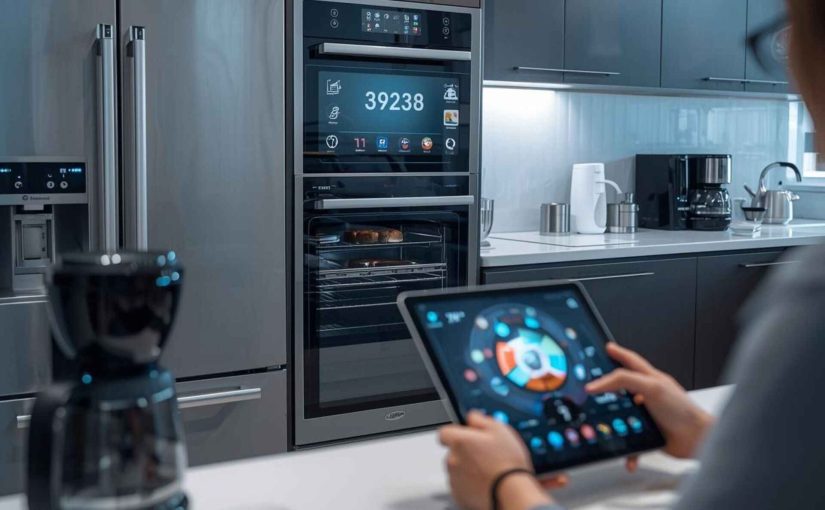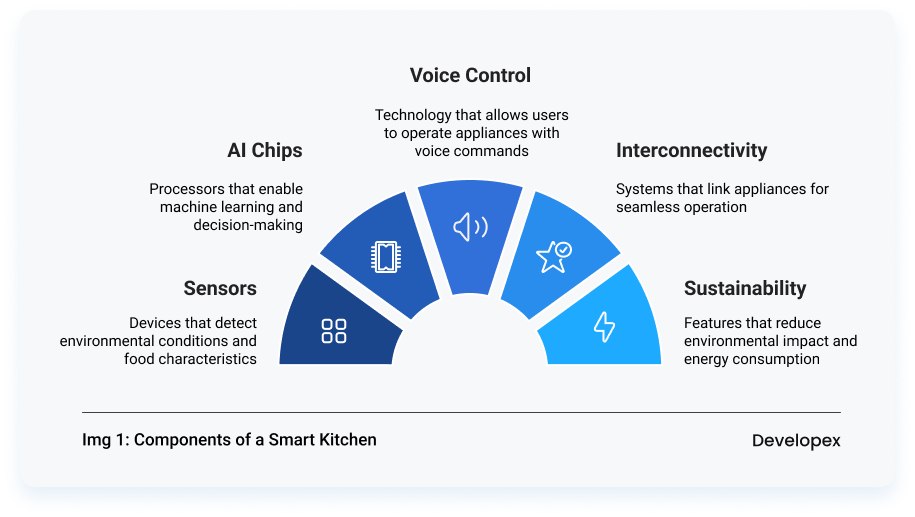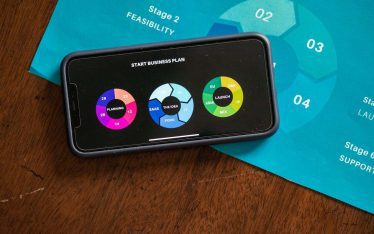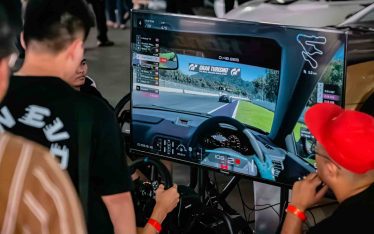
The kitchen has always been the heart of the home – and today, it’s becoming the central hub of the smart ecosystem. Smart cooking devices have rapidly evolved from simple timers and basic digital controls to fully connected, sensor-rich appliances powered by IoT and AI.
Early “smart” appliances (IoT 1.0) focused on basic remote control: checking temperature, starting cycles, or receiving status notifications. Useful, but limited. As AI, edge computing, and advanced sensors matured, this level of connectivity stopped being enough. Consumers now expect devices that not only connect, but think – appliances that adjust in real time, anticipate mistakes, and personalize cooking based on behavior.
This shift is pushing manufacturers to move from hardware-first thinking to a fully software- and data-driven product strategy – one that requires seamless integration of machine learning, cloud services, and multi-device interoperability.
This deep dive explores the current market landscape, the key innovations reshaping connected cooking, and the emerging software and hardware capabilities that will define the smart kitchen experience by 2026.
- 1. Market Trends: Rise of Connected Kitchen Appliances
- 2. Segment Trends: Where the Investment is Flowing
- 3. Connected Kitchen Hardware: AI, Sensors, and the 'Hands-Free' Kitchen
- 4. The Brain of the Kitchen: Software, AI, and the Unified Ecosystem
- 5. The 2026 Outlook: Automation, Health, and the Fully Integrated Kitchen
- 6. Why Smart Kitchen Innovation Requires Specialized Development Partners
- Conclusion: The Road to the Intelligent Kitchen
1. Market Trends: Rise of Connected Kitchen Appliances
The smart kitchen market is seeing rapid growth, with North America and Western Europe leading the charge. While the overall picture is one of accelerating adoption, the motivations and scale differ across key regions.
Regional Adoption: The Big Three
| Region | Key Adoption Metric (2023/2024) | Primary Driver | Notable Insight |
| United States | ~13% of households own at least one smart appliance. | Tech Enthusiasm & Convenience | Accounts for 33% of global smart kitchen appliance revenue in 2023. |
| Western Europe | 12-13% of individuals use smart home appliances. | Energy Efficiency & Sustainability | Fastest-growing market, with forecasts of 12% CAGR through 2030. |
| Canada | Market expected to grow 17.6% annually (2024-2030). | Health & Lifestyle Factors | Strong interest in nutrition tracking and specialized cooking features. |
The data confirms a trend: smart kitchen adoption is no longer theoretical – it’s quantifiable and rapidly accelerating. The U.S. remains the revenue heavyweight, but Europe is the fastest-growing market, fueled by the immediate, real-world benefit of energy savings. Canada mirrors the U.S. in lifestyle motivation but shows a specific hunger for health-oriented features.
The Core Consumer Drivers
Why are consumers suddenly replacing perfectly functional “dumb” appliances? Five core demands are fueling this transition:
- Convenience & Time-Saving: Post-pandemic, the desire to simplify meal prep and enable multitasking has become paramount. Consumers seek automation for routine tasks–pre-heating the oven remotely, or automatically reordering groceries.
- Connectivity & Smart Home Integration: For younger demographics, seamless app control, voice command integration (via Alexa/Google Assistant), and interoperability within the wider smart home are baseline expectations, not premium gimmicks.
- Energy Efficiency & Sustainability: This is a major European driver, now gaining ground in North America. AI-guided dishwashers, intelligent ovens, and spoilage alerts (in fridges) help reduce utility bills and food waste, aligning with consumer values and new government standards.
- Premium Lifestyle & Modern Design: Smart appliances tap into the “premiumization” trend. Homeowners are willing to invest in multifunctional devices (like smart ovens with built-in air fryers) that offer both high-tech bells and a sleek, unified aesthetic.
- Health & Food Management: Consumers are looking for proactive help with wellness. Features like AI-monitored expiration dates, recipe suggestions tailored to dietary needs, and connected devices that promote healthier cooking (steaming, air frying) are high-value propositions.
2. Segment Trends: Where the Investment is Flowing
The smart kitchen market spans both major appliances and smaller gadgets, with some categories leading the charge.
Refrigerators
Smart fridges are the flagship of many connected kitchens, commanding the largest market share (~34% of smart kitchen appliance revenue). These often feature touchscreens, internal cameras, and AI that manages groceries. For example, modern smart fridges can recognize stored items, track their freshness, and even sync with grocery apps to reorder staples automatically. This central role in food management makes fridges a high-demand segment.
Dishwashers and Ovens
Smart dishwashers (around 24% market share) and smart ovens (~21% share) are also rapidly gaining adoption. Connected dishwashers attract consumers with features like remote monitoring (e.g. smartphone alerts when a cycle finishes) and eco-optimized cycles that adjust water usage to load size.
Smart ovens and ranges, on the other hand, offer capabilities like recipe-guided cooking, automatic temperature adjustments, and integration with voice assistants for hands-free control. These ovens often include modes for air-frying, dehydration, steaming, etc., catering to foodies and home chefs seeking versatility.
Range Hoods & Cooktops
Even traditionally “dumb” appliances like exhaust hoods are getting smarter. Some high-end range hoods now connect wirelessly to cooktops – for instance, automatically turning on the vent and lights when the stove is in use, then off again when cooking stops. This kind of interoperability enhances safety and convenience.
Smart cooktops (including induction ranges) are incorporating features like built-in temperature sensors, “scan-to-cook” technology, and even camera-based food recognition to adjust heat.
Small Appliances
IoT is also infiltrating smaller countertop appliances – from coffee makers and multicookers to blenders and toasters. Today, large appliances still account for ~72% of smart kitchen sales, but smaller appliances are the fastest-growing segment (projected ~15% CAGR through 2030) as connectivity modules become cheaper.
We’re seeing smart microwaves that respond to voice commands, app-controlled coffee machines that brew on schedule, and even smart pressure cookers that download recipes. Although smart models made up only ~16% of total kitchen appliances in 2024 (with traditional models still ~84%), the tide is turning.
Categories like air fryers have surged in popularity (nearly 30% of U.S. consumers plan to buy one, many of which are app-enabled), illustrating how IoT features are becoming standard in even small kitchen tools. As we approach 2026, expect a proliferation of connected gadgets on the countertop, all part of the broader kitchen network.
Table: Smart Kitchen Appliance Market Snapshot (Global, by Product Type)
| Product Category | Share of Smart Kitchen Market (2023) | Notable Smart Features |
| Smart Refrigerators | ~34% of revenue | Internal cameras, AI temperature control, inventory tracking, touchscreen with apps. |
| Smart Dishwashers | ~24% | Remote start/monitoring, water-use optimization, maintenance alerts, auto-reorder detergent. |
| Smart Ovens/Ranges | ~21% | Recipe presets, food recognition, voice control, self-cleaning modes, built-in air fry/steam. |
| Smart Steamers (built-in steam ovens & specialty cookers) | ~12% | Precision steaming for healthy cooking, automatic timing, integration with recipe apps for guided cooking. |
| Other Appliances (Microwaves, Mixers, etc.) | ~9% | Varied – e.g., smart microwaves with barcode scanning for package instructions, connected coffee makers with voice/app scheduling. |
Insight: The data above shows refrigerators are currently the largest segment of smart kitchens, but all categories are growing. By 2026, analysts expect the overall smart kitchen market to roughly double from mid-2020s levels, with accelerating adoption across product types.
3. Connected Kitchen Hardware: AI, Sensors, and the ‘Hands-Free’ Kitchen
The shift toward the smart kitchen is fundamentally a hardware story. Appliances are no longer just heating elements and motors; they are sophisticated computing devices. The innovations emerging in 2025–2026 are focused on embedding Intelligence at the Edge – meaning, the appliances themselves can think, see, and communicate without constant cloud dependency.

The Foundation: Sensor-Driven Precision
The intelligence of a modern kitchen device begins with its senses. Appliances are now packed with advanced sensors that enable real-time, autonomous operation:
- Vision & Image Sensors: Cameras in smart refrigerators do more than just let you “peek inside.” They feed data to AI image analysis that tracks inventory, monitors food freshness, and suggests recipes based on what’s visible. In smart ovens, image sensors can literally recognize the food (e.g., distinguishing fish from poultry) and adjust cooking settings on the fly.
- Preventative Sensors: Smart cooktops now feature sensors to detect the onset of boiling, automatically adjusting the heat to prevent spills. This micro-level control transforms cooking from a constant monitoring task into an automated process.
- Environmental & Load Sensors: Fridges use advanced humidity and temperature sensors to create optimal environments for specific produce. Dishwashers use load and dirtiness sensors to precisely tune water and energy usage, tying hardware innovation directly to energy efficiency – a key consumer driver.
These sensors essentially give appliances “eyes and ears,” enabling them to respond to their environment in real time, moving beyond simple timers and presets.
Edge Intelligence: The Rise of the AI Chip
The real game-changer is the integration of Artificial Intelligence, often powered by dedicated AI processors (NPUs). Manufacturers like Samsung and LG are embedding these chips into their premium appliances to enable true “Edge AI”:
- Adaptive Learning: AI algorithms allow appliances to learn user behavior. A smart fridge can learn peak usage hours and adjust its cooling cycles to save energy during off-peak times.
- Pro Cooking Assistance: Advanced “AI Pro Cooking” modes can analyze multi-stage recipes and food doneness using sensor data, optimizing bake and broil settings for perfect results. The appliance is no longer just executing a program; it’s deciding the best cooking path based on real-time data analysis.
- Future Sous-Chef: We are moving toward a future where AI can dynamically adjust a recipe based on ingredient substitutions or quantity changes, moving the smart appliance from a tool to a true culinary partner.
The emergence of the NPU segment – expected to grow at a 21.5% CAGR between 2025 and 2034 – underscores the industry’s commitment to making appliances smarter, faster, and more power-efficient through dedicated on-device processing.
Seamless Experience: Voice, Touchless, and Interconnectivity
Convenience in the modern kitchen is defined by hands-free operation and interoperability:
Voice Control & Touchless Interaction: Voice commands (via Alexa, Google Assistant, or proprietary AI) are rapidly becoming standard. This allows users to control ovens, dishwashers, and even answer phone calls via a fridge screen, eliminating the need to touch control panels with messy hands.
Multi-Device Ecosystems: Cutting-edge hardware is designed to operate as a coordinated network. Examples include:
- A smart cooktop automatically signaling a connected range hood to turn on ventilation when it starts and off when it’s done.
- Appliances broadcasting status updates – e.g., the oven timer finishing – to the refrigerator screen or even the living room TV.
- The manufacturer vision of “Multi-Screen Interconnectivity,” allowing central control of all kitchen devices from a single hub (like a fridge display or mobile app).
The Green Kitchen: Hardware for Sustainability
Sustainability is a powerful hardware driver, particularly in regulation-heavy markets like Western Europe. Innovations are focusing on reducing the environmental footprint:
- AI Energy Optimization: New hardware supports “AI Energy Modes” that analyze electricity tariffs and shift high-draw operations (like defrost cycles or ice making) to off-peak hours to save money and energy.
- Adaptive Resource Use: Load-sensing dishwashers and fridges with advanced compressors and insulation ensure that only the necessary amount of energy and water is consumed per task.
- Longevity: Hardware is increasingly designed for diagnostics and predictive maintenance, extending the lifespan of the appliance and reducing waste.
4. The Brain of the Kitchen: Software, AI, and the Unified Ecosystem
If advanced hardware provides the senses and muscle for the smart kitchen, software is the central nervous system, coordinating complex tasks, personalizing experiences, and ensuring seamless operation. By 2026, software advancements are rapidly dismantling the traditional silos between appliances, making the kitchen truly intelligent and adaptable.

The Foundation: Integrated IoT Platforms and Apps
Every major appliance vendor – from Samsung’s SmartThings and LG’s ThinQ to Bosch’s Home Connect – operates on a sophisticated IoT platform. These platforms and their associated apps are moving beyond simple remote control:
- Unified Control: The apps serve as a central orchestration point, allowing users to manage multiple devices (fridge, oven, lights, thermostat) and integrate them into automated home routines.
- Feature-Rich Interfaces: Software enables advanced features like pre-cooling a fridge before a major grocery run or seamlessly starting a complex coffee-making schedule.
- Cloud-to-Cloud Integration: The ecosystems are opening up, enabling links with third-party services like Amazon Fresh for automated grocery reordering or nutritional apps for diet tracking.
This trend implies that developers must prioritize open APIs and smooth data handoffs, as users increasingly expect their device platforms to communicate with external services.
Seamless Interoperability: The Matter Standard
The complexity of connecting devices from multiple manufacturers is being solved by new unifying standards. The Matter protocol, which operates over Wi-Fi and Thread, is the most critical development for ensuring seamless, multi-brand interoperability in the kitchen.
- Guaranteed Compatibility: Matter ensures that a device from Brand A (e.g., an oven) can natively and securely communicate with a device from Brand B (e.g., a range hood) and integrate into any Matter-compliant controller (Apple Home, Google Home, Alexa).
- Simplified UX: For consumers, this means the friction of setup is eliminated, and they can control their entire kitchen via a single, preferred ecosystem app.
- Strategic Shift: For manufacturers, the necessity of adhering to this standard shifts the competitive focus from basic connectivity (solved by Matter) to the differentiation of unique software features, AI performance, and quality of service. Developers must build on Matter’s API to ensure the appliances can participate in multi-device routines and share status updates natively across the smart home environment.
Predictive & Guided Cooking: The AI Sous Chef
The most user-facing software innovation is the shift from manual cooking to guided, predictive cooking:
| Feature | Description | Software Mechanism |
| Recipe Guidance | One-click recipe execution from apps (e.g., SideChef, Yummly) that automatically sets the oven’s mode, temperature, and time. | Programmatic control via cloud APIs linking recipe databases to appliance firmware. |
| Predictive Algorithms | Ovens learn user preferences (e.g., cooking a dish slightly longer for a crispier texture) and adjust settings automatically for consistent results. | On-device Machine Learning (ML) utilizing sensor data and historical user behavior. |
| Real-time Feedback | Future systems will provide real-time alerts or instructions (e.g., “stir the sauce now”) via smart speakers or appliance displays. | Advanced natural language processing and real-time sensor monitoring linked to instructional software. |
This fusion of knowledge bases (recipes) with physical control (appliance settings) is making cooking foolproof for novices and highly optimized for experts.
AI Meal Planning and Personalization
Software is revolutionizing food management, tackling the critical issues of health and food waste.
- Smart Inventory and Recipe Suggestions: Platforms like Samsung Food leverage digital inventory (manual, barcode, or AI vision input) to suggest recipes that use ingredients currently in the fridge. This directly addresses the food waste problem – a major focus for developers in markets like Japan.
- AI Nutritionists: Algorithms are emerging that factor in complex dietary restrictions (allergies, low-sodium, specific health goals) to create tailored, weeks-long meal plans.
- Health Data Sync: The integration of cooking appliance data (e.g., the oven’s app logging the calories of a prepared dish) with external fitness trackers and diet apps is on the horizon, creating a holistic view of user health.
For startups, the opportunity lies in combining IoT data with sophisticated AI models to help consumers eat smarter, reflecting the rising consumer demand for health-oriented features.
Voice Assistant Integration: The Hands-Free Interface
Voice is quickly becoming the primary interface in the kitchen, a necessity when hands are often busy or messy.
- Software Hooks: Manufacturers build “skills” and native support to ensure their devices are compatible with major platforms like Amazon Alexa, Google Assistant, and Apple Siri/HomeKit.
- Complex Routines: Software enables appliances to be incorporated into multi-step voice routines (e.g., “Good morning” starting the coffee maker, turning on the kitchen lights, and starting the news).
- Natural Language Processing (NLP): Developers must perfect NLP to reliably parse and execute complex voice commands like, “Preheat the oven to 350 F and set a timer for 20 minutes.”
By 2026, expect voice to initiate and manage complex tasks, requiring robust cloud APIs and local processing to minimize latency and errors.
Remote Diagnostics and Predictive Maintenance
Software is transforming appliance service from reactive to proactive, leading to higher customer satisfaction and new business models.
- Self-Monitoring: Appliances log performance data on component health, usage, and errors, which can be accessed via the app (LG ThinQ Smart Diagnosis is a key example).
- Predictive Failure: AI algorithms analyze sensor data (e.g., motor vibration, cycle times) to predict if a component is nearing failure before a breakdown occurs.
- Automated Service: In the most advanced systems, software can initiate proactive service requests – alerting the owner, ordering a part, or even scheduling a technician directly through the service cloud.
This capability not only improves appliance longevity but also opens up opportunities for subscription services tied to maintenance and enhanced warranties.
5. The 2026 Outlook: Automation, Health, and the Fully Integrated Kitchen
The trajectory of the smart kitchen points toward a fully autonomous, highly personalized, and sustainably optimized environment. By 2026, the kitchen will solidify its role as an intelligent node in the broader smart home, creating immense opportunities for innovation in software, robotics, and integrated services.
Autonomous and Assisted Cooking
By 2026, the kitchen will see significant steps toward partial automation. While fully robotic kitchens remain high-end prototypes, the technology will appear in two accessible forms:
- Specialized Robotic Gadgets: Smaller, focused robotic assistants will automate tedious prep tasks like chopping, mixing, or stirring on the countertop. This drives a new market for innovative robotic add-ons.
- Appliance Autonomy: Core appliances will handle complex, multi-stage recipes independently. This includes smart ovens with integrated mechanics to move food between modes, and multi-cookers that automatically add ingredients from dispensers.
This acceleration toward autonomy creates immense opportunities for startups in the food tech space, particularly in developing innovative robotic add-ons, smart cookware, and algorithmic cooking guides that ensure appliance cooperation. Furthermore, this trend is poised to spawn new revenue models, such as Meal Preparation as a Service (MPaaS), where consumers utilize specialized machines for hands-off cooking, blending physical appliances with automated culinary services.
Integration with Grocery, Delivery, and Waste Management
By 2026, the friction between kitchen inventory and purchasing will be almost eliminated. Inventory management (via AI vision or barcode scanning) will seamlessly sync with retailers like Amazon Fresh or Walmart.
- Proactive Replenishment: Automatic reordering of staples will become widespread, with the user only needing to approve the cart.
- Dynamic Food Waste Management: Software will connect spoilage alerts directly to action, suggesting recipes or offering dynamic price sharing/donation prompts for items near expiry.
Opportunities: Building platforms that standardize recipe/food data formats and creating intelligent e-commerce APIs that optimize purchasing based on real-time kitchen inventory data are huge opportunities.
The Smart Kitchen as a Resource Management Hub
The kitchen is transitioning into a core component of the sustainable smart home, actively managing its resource consumption. Standards like Matter are enabling appliances to coordinate with home energy systems and utility rates.
Intelligent systems automatically shift high-draw operations (like dishwashing or charging) to off-peak times or periods of renewable energy abundance. This dynamic resource balancing allows appliances to prevent demand spikes and optimize overall home energy usage. This whole-home efficiency directly results in cost savings and significant environmental gains, creating new opportunities for developers to build innovative control algorithms and energy management dashboards.
Hyper-Personalized Health and Dietary Integration
Health trends are poised to become the most profound driver of the next-generation smart kitchen. We are shifting from simple recipe filtering to hyper-personalized nutrition, where kitchen devices cooperate seamlessly to become an “invisible wellness” partner.
This integration frontier will unlock:
- Wearable Sync: Smart appliances suggesting meals based on sleep quality, workout intensity, or glucose levels from fitness trackers
- Nutritional Transparency: Ovens and blenders estimating caloric content and macros for prepared dishes, logging to health apps
- Dietary Management: AI filtering recipes and automatically adjusting suggestions for specific conditions (diabetes, hypertension, allergies)
The High-Stakes Requirement: Because this data is highly sensitive, development must prioritize security. Delivering these features requires enterprise-grade, HIPAA-level data security and robust privacy controls. Failure to implement these rigorous standards constitutes a catastrophic risk to brand trust and consumer adoption.
New Business Models and the AR Kitchen
The growth in connected kitchens is opening new revenue streams beyond the initial hardware sale:
- Kitchen-as-a-Service (KaaS): Subscription models could emerge for high-end appliances, including maintenance and automatic feature upgrades for a monthly fee.
- AR-Guided Cooking: Advancements in Augmented Reality (AR) glasses and computer vision (CV) mean developers can create hands-free, gesture-controlled recipe guides that project instructions, timers, and even virtual measurements directly onto the countertop. This area is ripe for innovation, blending physical cooking with digital guidance.
- Data and Content Subscriptions: Premium recipe libraries, advanced AI cooking modes, and concierge virtual chef services will increasingly be offered as premium, subscription-based features.
6. Why Smart Kitchen Innovation Requires Specialized Development Partners
The journey from a “smart” appliance to an “intelligent” kitchen requires bridging a significant gap between hardware engineering and cutting-edge software development. This is precisely where a dedicated, full-cycle technology partner provides indispensable value.
Developex specializes in transforming ambitious product visions into stable, scalable, and secure commercial realities. Our expertise is tailored to address the unique complexities of the smart appliance industry:
- Full-Cycle Software and Firmware Development: We provide end-to-end development, from optimizing embedded firmware on appliance chips and creating secure Over-the-Air (OTA) update systems for continuous improvement.
- Ecosystem Interoperability & Cross-Platform Integration: Our teams are experts in integrating proprietary appliance suites with major smart home platforms and third-party services (grocery ordering, recipe aggregators), ensuring seamless data exchange and a unified user experience.
- Scalable Cloud Infrastructure: We build robust, high-availability IoT backend platforms to manage millions of connected devices, handle real-time data streams, and ensure data privacy and security compliance.
- UI/UX Design and QA: We ensure a flawless user experience through intuitive cross-device interfaces (touchscreens, apps, VUI) and rigorous Quality Assurance testing across the entire hardware-cloud-mobile stack.
Conclusion: The Road to the Intelligent Kitchen
Connected cooking devices are rapidly evolving from being merely “smart”–capable of remote control–to becoming genuinely “intelligent” and “autonomous.” This transformation is fueled by the deep, complex integration of Edge AI, computer vision, and secure cloud services.
The next generation of kitchen innovation will be defined not by incremental hardware upgrades, but by the sophistication, security, and seamlessness of its software. This software layer is what enables predictive maintenance, hyper-personalized recipes, and autonomous meal planning.
The manufacturers who will ultimately win the race to the intelligent kitchen are those who recognize that software sophistication is the primary competitive differentiator–and who partner strategically to acquire the necessary, full-cycle expertise.
Navigating this transition requires dedicated, deep expertise in embedded systems, AI optimization, and scalable cloud architecture. Don’t let the complexity of interoperability and AI integration slow down your competitive advantage. Partner with Developex to engineer the intelligent, autonomous kitchen of 2026 and beyond.





